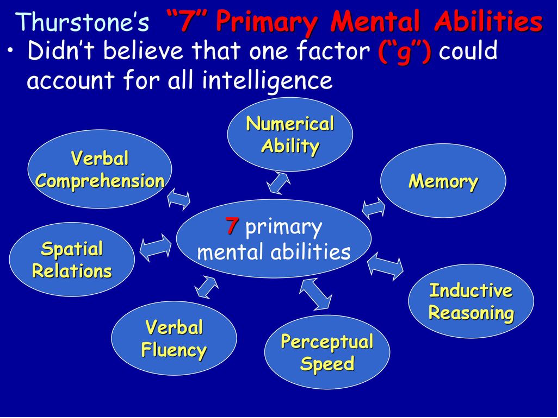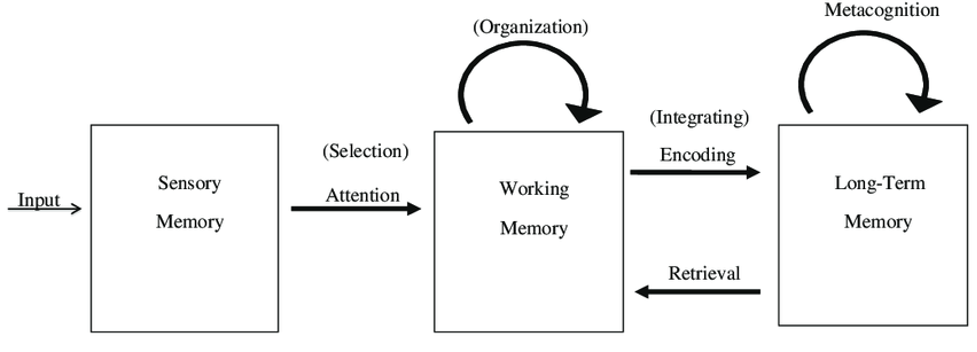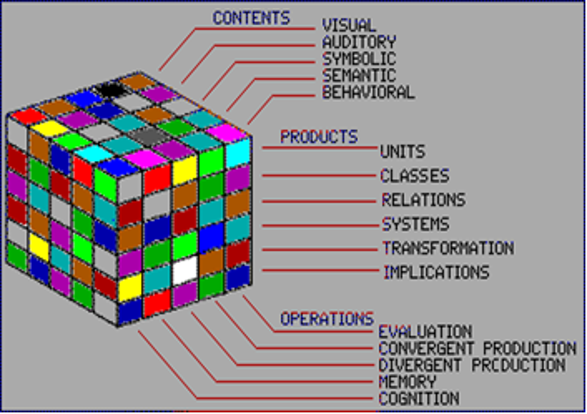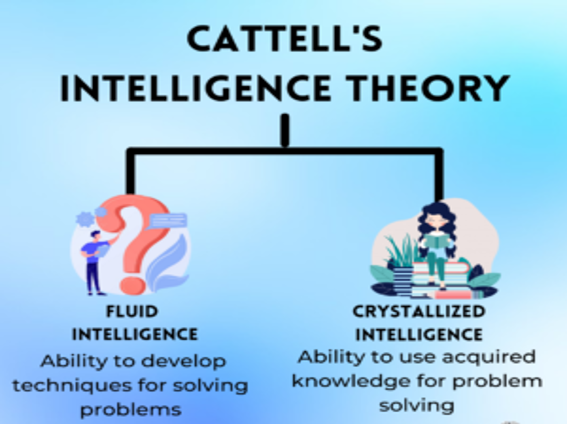Introduction
Intelligent human behavior is often attributed to a single underlying element or construct in single-factor theories. This construct is measurable, stable, and related to performance on cognitive tasks. According to these theories, intelligence comprises a single general factor or several distinct factors measuring a particular ability or set of capabilities. Spearman’s g-factor hypothesis is one of human intelligence’s most prominent single-factor theories (Deary, 2012). This theory proposes that intelligence comprises a single general factor (g) that influences all cognitive activities and tasks. This factor is the primary determinant of individual differences in cognitive ability and is often measured with intelligence tests. Throughout a person’s life, the g factor remains constant, and it has been shown to connect with many other areas of academic and professional achievement. Another one-factor explanation of intelligence is Thurstone’s leading mental capacities theory. Verbal comprehension, word fluency, memory, spatial imagery, perceptual quickness, numerical reasoning, and inductive reasoning are all proposed intelligence components in this model (Spearman, 1904). Individual variations in intellect are often explained by this hypothesis and utilized in the creation of IQ tests.
Single-factor theories of intelligence have been used to inform educational practices and to identify and support individuals with learning difficulties. For example, tests based on these theories often identify students more likely to require additional support in the classroom. These tests can also measure educational programs’ effectiveness and assess teaching methods’ effectiveness. Additionally, these theories have been used to develop strategies to support students with learning difficulties, such as providing additional instruction or using specialized teaching materials. Single-factor theories of intelligence have been criticized for their limited scope and reliance on tests that may not accurately measure a person’s intelligence (Jensen, 1998).
Additionally, these theories do not take into account the complex nature of intelligence, which is thought to be composed of many different cognitive abilities. It is also important to note that single-factor theories of intelligence cannot explain the wide range of individual differences in intelligence between individuals. In conclusion, single-factor theories of human intelligence propose that a single factor or construct is responsible for human intelligence. Examples of single-factor approaches include Spearman’s g-factor and Thurstone’s primary mental abilities theory. These theories have been used to develop intelligence tests and explain individual differences in intelligence (Gottesman, 2004). Additionally, these theories have been used to inform educational practices and to identify and support individuals with learning difficulties (Jensen, 1998). However, single-factor theories of intelligence are limited in scope and need to consider the complex nature of intelligence.
Spearman’s Theory of Intelligence
British psychologist Charles Spearman presented his theory of intelligence, or cognition, in the early 1900s. According to this idea, there are two parts to intellect: the general factor (g), which applies across the board, and the specialized variables, which explain individual differences in performance (s). The general aspect is an innate character feature that determines how well a person does in school and life. This overarching quality is indicative of one’s logical thinking, problem-solving skills, capacity for abstraction, and capacity for rapid knowledge acquisition. Ability in arithmetic computation, language proficiency, and perceptual acumen are all examples of domain-specific components. Based on this idea, performing most cognitive activities requires a mix of both broad and specialized knowledge. Therefore, an individual’s total score on a cognitive test depends on both aspects. According to this idea, one’s general intelligence is mainly determined by the degree of the general factor, which is why it places such high emphasis on it (Huang et al., 2019). A popular and valuable tool in contemporary psychology, Spearman’s theory of intelligence has stood the test of time. It serves as the basis for many current intelligence and cognitive growth theories. Differentiation of intelligence and the maturation of intelligence are two more phenomena that this theory has been used to explain.
The essential premise of Spearman’s Theory of Intellect is that a single, universally applicable measure of intelligence exists. According to this idea, intelligence has two parts: a generic component (g) and a set of domain-specific elements (s). The general aspect is a hidden personality attribute that determines how well a person does in school and life (Spearman, 1904). This overarching quality is indicative of one’s logical thinking, problem-solving skills, capacity for abstraction, and capacity for rapid knowledge acquisition. Ability in arithmetic computation, language proficiency, and perceptual acumen are all examples of domain-specific components. The general factor is emphasized in Spearman’s theory of intelligence as a significant determinant of success. According to this view, there is only a limited amount of variation in a cognitive capacity that can be attributed to the specialized aspects, and the degree of the general part ultimately defines a person’s comprehensive intelligence (Jensen, 1998). Since its introduction in the 1920s, Spearman’s Theory of Intelligence has been extensively adopted and is often used in psychology. Some have looked to this idea to shed light on individual IQ variance and the maturation of intellect across time.
Thurstone’s Primary Mental Abilities
Psychologist Louis L. Thurstone proposed the PMA hypothesis in the 1930s, arguing that seven core cognitive talents together make up intelligence. These seven skills are reading comprehension, vocabulary expansion, numeric aptitude, spatial imagery, memory associations, processing speed, and inductive reasoning (Spearman, 1904). The hypothesis states that these seven skills are the foundation of intelligence and may be utilized to evaluate a person’s IQ.

The PMA theory is widely accepted and used in many areas of psychology, including educational and occupational testing. It has been used to explain differences in intelligence among various populations, such as gender, socioeconomic status, and race. Additionally, the theory has been used to develop educational programs and interventions to help students with learning disabilities. Furthermore, it has been used to help diagnose and treat psychological disorders.
According to the PMA hypothesis, intelligence is not a single trait but a collection of skills that may be assessed and ranked (Gottesman, 2004). This theory contrasts other theories of intelligence, such as Spearman’s g-factor theory, which suggests that intelligence is composed of only one general ability. The PMA theory is widely accepted as a reliable measure of intelligence and has been used to identify people who are gifted or have learning disabilities. It is also used to assess individual performance on educational and occupational tests.
Additionally, the PMA theory has been used to develop educational programs and interventions to help students with learning disabilities. The PMA theory has been criticized for its lack of predictive validity and limited ability to assess complex behaviors (Gottesman, 2004). Additionally, it has been argued that the PMA theory needs to address the full range of human intelligence adequately. Despite these criticisms, the PMA theory is still widely accepted and used in many areas of psychology.
Guilford’s Structure of Intellect Model
The Guilford Structure of Intellect Model (SOI) is an influential cognitive theory developed by psychologist J.P. Guilford in 1967. This comprehensive approach to understanding how the mind works propose that intelligence comprises a total of 120 different abilities, which can be divided into three broad categories: operations, contents, and products. Operations are the basic mental processes used to think and reason. This includes functions such as memory, analysis, and problem-solving. Contents refer to the categories of information used in these operations, such as words, numbers, and images (Spearman, 1904). Finally, products direct to the result of these operations, such as decisions, plans, and solutions. The SOI model is essential to psychology because it comprehensively understands how the mind works. It provides a framework for understanding how different abilities interact and contribute to intellectual development. It also sheds light on how different types of thinking can be used to solve different kinds of problems.
Furthermore, the model may create efficient pedagogical and treatments by highlighting areas of strength and improvement in cognitive functioning (Jensen, 1998). A person with strong analytical talents may be more equipped to tackle complex challenges than their less analytical counterparts. A person with a strong memory may also be better able to recollect previously learned material than one with a weak memory.
SOI model

By understanding a person’s strengths and weaknesses, the SOI model allows educators and therapists to create tailored educational and therapeutic interventions. The SOI model also provides insight into how different types of thinking can be used to solve different kinds of problems. For instance, someone with strong analytical abilities may be better suited to solving complex problems, while someone with strong memory abilities may be better suited to remembering and retrieving information. The model may also aid in determining where a person’s cognitive skills excel and where they require improvement so that appropriate instructional and therapeutic measures can be taken. Finally, the SOI model is also helpful in understanding the relationship between different types of intelligence (Jensen, 1998). For example, someone with solid numerical abilities may also have strong verbal skills, and someone with strong creative abilities may also have strong analytical abilities. By understanding the relationship between different types of intelligence, educators and therapists can develop interventions tailored to each person’s needs.

Cattell-Horn-Carroll Theory
Popularly known as the “CHC” hypothesis, it was devised by psychologists Raymond Cattell, John Horn, and John Carroll to explain how intelligence is measured. According to the notion, there are three types of intelligence: innate, acquired, and learned. Thinking quickly on one’s feet, using reasoning, and finding creative solutions are all examples of fluid intelligence. Crystallized intelligence refers to a person’s acquired expertise and knowledge from life experiences and formal education. The flexibility of mind, openness to new ideas, and a vast repertoire of problem-solving methods all contribute to general intelligence. The CHC Theory also proposes that intelligence is hierarchical, meaning that the three factors of intelligence are made up of more specific abilities and skills (Deary, 2012). Psychologists and educators have widely accepted the CHC Theory because it provides a comprehensive framework for understanding individual differences in intelligence.
It is based on the idea that intelligence is composed of multiple components which can be assessed and measured. The theory suggests that different abilities and skills can be identified and used to evaluate an individual’s intelligence. For example, setting an individual’s fluid and crystallized brightness can provide insight into their problem-solving and academic performance. Additionally, understanding the hierarchical structure of intelligence can help educators better understand individual learning styles and create curricula tailored to meet each student’s needs (Spearman, 1904). The CHC Theory has been used as a theoretical basis for the creation of various forms of assessment and as a framework for investigating intelligence variation. It is also used to inform interventions and to help professionals create individualized plans for students who are struggling in school. For example, understanding the components of an individual’s intelligence can help identify areas in which they may need additional support, such as mathematics or reading.
Additionally, the theory can be used to inform instruction and to create learning environments that are tailored to the individual needs of each student. In conclusion, the Cattell-Horn-Carroll Theory is a widely accepted and valuable theory of intelligence used to inform educational and psychological assessments (Jensen, 1998). It provides a comprehensive framework for understanding individual differences in intelligence and creating individualized instruction and interventions for struggling students. By understanding the components of an individual’s intelligence, psychologists, educators, and other professionals can better identify areas of strength and weakness and create individualized plans for success.

Gardner’s Theory of Multiple Intelligences
According to Gardner’s theory of multiple intelligences, there are eight different kinds of intelligence, each with its traits and abilities. Language, mathematic-logical, spatial, musical, kinesthetic, social, intrapersonal, and naturalist intelligence are all in this category. Individuals, this idea suggests, possess varying degrees and types of intelligence, none of which is more vital than the others (Deary, 2012). Educators have utilized Howard Gardner’s theory of multiple intelligences to construct individualized lesson plans and classroom activities that appeal to all students. For instance, by understanding each student’s unique combination of intelligence, teachers can create learning experiences tailored to the individual student’s strengths and interests (Spearman, 1904). This helps to guarantee that all students, regardless of their individual talents and shortcomings, have the opportunity to participate in meaningful learning activities. In addition to this, better assessments based on Howard Gardner’s theory of multiple intelligences have been established (Jensen, 1998). If teachers have a solid understanding of the many types of intelligence that are represented in their classroom, they will be better able to evaluate the strengths and weaknesses of each individual student. This helps to guarantee that tests are able to appropriately evaluate a student’s knowledge and comprehension without being too biased toward any certain intellect. This helps to guarantee that all students, regardless of their individual talents and shortcomings, have the opportunity to participate in meaningful learning activities. In addition to this, better assessments based on Howard Gardner’s theory of multiple intelligences have been established (Jensen, 1998). If teachers have a solid understanding of the many types of intelligence that are represented in their classroom, they will be better able to evaluate the strengths and weaknesses of each individual student. This helps to guarantee that tests are able to appropriately evaluate a student’s knowledge and comprehension without being too biased toward any certain intellect. In addition to this, Howard Gardner’s theory of multiple intelligences has been used to the process of determining a person’s learning preferences and areas of interest. Teachers are able to identify which sorts of courses and activities are most beneficial for each individual student if they have a solid grasp of the many forms of intelligence (Deary, 2012). This helps guarantee that every student has the opportunity to participate in meaningful learning experiences that are suited to their individual abilities and areas of interest.
Sternberg’s Triarchic Theory of Intelligence
Psychologist Robert Sternberg created an all-encompassing theory of intelligence, Sternberg’s Triarchic Theory of Intelligence, in the ’80s (Huang, 2019). The model postulates that intelligence has three facets: analysis, imagination, and experience. The idea states that achieving optimal intelligence requires a combination of all three components. One definition of intelligence is the capacity to understand and resolve issues. Logic and reason are the tools of this intelligence’s trade, used to overcome difficult situations. It is often linked to conventional forms of IQ testing and indicators of academic success. The capacity to come up with fresh concepts and “think outside the box” is what we mean when we say someone is creatively intelligent (Jensen, 1998). The process requires one to be open to novel ideas, discover novel connections, and think of novel approaches to old issues. Practical intelligence can put acquired information and abilities to use in real-world situations. The capacity to put one’s knowledge and skills to use in suitable cases and the flexibility to adjust to new circumstances are hallmarks of this kind of intelligence. According to Sternberg’s Triarchic Theory of Intelligence, all three elements are required for practical intelligence (Deary, 2012). According to the idea, these components may also interact, with each component having the potential to influence and improve the performance of the others. For instance, analytical intelligence may be utilized to come up with original ideas, while creativity can be employed to find solutions to difficult situations. This idea has had a significant impact on the field of psychology and has been used to shape educational procedures and get a deeper understanding of individual variations in intelligence (Huang, 2019).
The conventional ideas that people have about intelligence have been called into question by Sternberg’s Triarchic Theory of Intelligence, which has also made it possible to get a deeper understanding of the complexity of human cognitive development. The Triarchic Theory of Intelligence developed by Sternberg is an all-encompassing and multi-dimensional perspective on what it means to be intelligent (Deary, 2012). It acknowledges the significance of all three aspects of intelligence and implies that the effective application of intelligence involves the combination of all three aspects. Additionally, the idea has played a significant role in the formation of educational procedures and the comprehension of individual variations in levels of intellect. Sternberg’s Triarchic Theory of Intelligence, in the end, offers a complete understanding of what it means to be intelligent and has proven to function as a vehicle for challenging established ideas of intelligence.
Kaufman’s Theory of Intelligence
Kaufman’s Theory of Intelligence is an integrative theory of intelligence that suggests three mental acuity tiers. According to Kaufman, all three types of intellect are necessary for success. Kaufman posits three kinds of intelligence: analytical, creative, and practical. The capacity for abstract reasoning and developing novel ideas is logical intelligence. Most people believe in and research this kind of intelligence. Standardized test intelligence is the kind of intelligence most often evaluated by IQ testing and strongly correlates with high test scores. Creativity is the ability to generate new ideas and approaches to problems (Deary, 2012). This intelligence is associated with thinking creatively, solving problems, and developing new ideas. Practical intelligence is the ability to apply knowledge and skills to everyday situations.
This intelligence is associated with making decisions and adapting to new conditions. Kaufman’s Theory of Intelligence suggests that intelligence should be viewed holistically as a combination of different cognitive abilities. It emphasizes the importance of developing all three levels of intelligence to be successful in life. Kaufman’s theory also suggests that intelligence is shaped by innate abilities and environmental and cultural factors (Spearman, 1904). Kaufman’s Theory of Intelligence has been criticized for being too broad and vague and for failing to consider how intelligence is shaped by cultural and environmental factors (Jensen, 1998). Additionally, there needs to be more empirical evidence for the three levels of intelligence proposed by Kaufman.
Conclusion
Theories of human intelligence based on the idea of a single component or construct being accountable for intelligence argue that such a factor or construct exists (Jensen, 1998). The g factor proposed by Spearman and the main mental talents hypothesis proposed by Thurstone are examples of single-factor theories. These ideas have been used in developing many IQ tests and explaining individual variances in intellect. In addition, these beliefs have informed educational methods, and people with learning impairments have been identified and supported using these theories (Deary, 2012). On the other hand, single-factor explanations of intelligence have a restricted scope and fail to consider the multifaceted character of intelligence. Other theories of intelligence, such as the Cattell-Horn-Carroll Theory, Guilford’s Structure of Intellect Model, Gardner’s Theory of Multiple Intelligences, and Sternberg’s Triarchic Theory of Intelligence, provide more comprehensive frameworks for understanding individual differences in intelligence. Some examples of these theories include the following: These ideas highlight the significance of intelligence having various components and imply that intelligence is molded not just by inherited talents but also by environmental and cultural variables (Spearman, 1904). Psychologists, educators, and other professionals are better equipped to recognize areas of strength and weakness and design tailored strategies for success when they have a more profound knowledge of the multifaceted structure of intelligence.
References
Deary (2012) “Intelligence” Annu Rev Psychol 63: 453 – 482 C
Gottesman (2004) “Just one g: consistent results from three test batteries,” J Intelligence 32: 95–107
Huang, M. H., Rust, R., & Maksimovic, V. (2019). The feeling economy: Managing in the next generation of artificial intelligence (AI). California Management Review, 61(4), 43-65.
Jensen (1998) “The g factor” W Johnson, TJ Bouchard, RF Krueger, M McGue, II
Spearman (1904) “General Intelligence: objectively determined and measured” Am J Psychol 15: 201 – 293 AR
 write
write